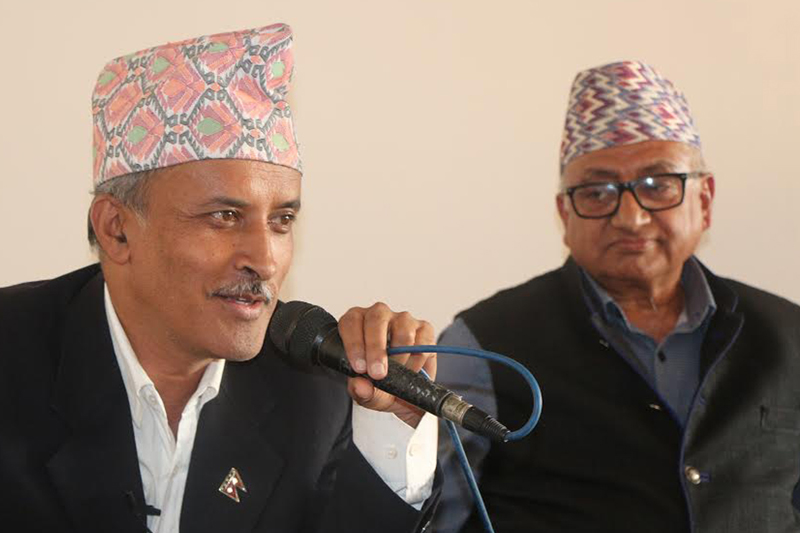Environmental data sharing top priority, says envoy
Kathmandu, November 6
Speaking at a programme organised by the Nepal Forum of Environmental Journalists today, Nepal’s Ambassador to China Leela Mani Paudyal stressed on data sharing, joint research and capacity building with regard to environmental issues between Nepal and China.
Paudyal said sharing of data with regard to the environment would be his first priority in the environment sector.
Currently, there are no classified data on rivers, forests, climate change, carbon emission, pollution, and water flow in Nepal. Paudyal said having comprehensive environment data was vital in dealing with climate change, pollution, and various environmental issues. He also said that data sharing between the countries would strengthen research.
“Floods in the Bhotekoshi River this monsoon showed us that we don’t have any data or adequate research regarding natural resources in the country,” he said, adding, “China, however, has a huge cache of data and has conducted numerous researches, so data sharing and research will be my priority.”
Paudyal also stressed on capacity building to develop Nepal’s adaptive and mitigation capacity against the adverse effects of climate change.
Another speaker at the programme Nepal’s Ambassador to India Deep Kumar Upadhyaya said political stability was necessary to be able to raise the country’s environmental issues in the international arena.
Former water resource minister Deepak Gyawali said climate change can adversely affect the energy sector, and damage the future of Nepali citizens.
The Himalayas are fragile environments particularly vulnerable to climate change. According to the International Centre for Integrated Mountain Development, the high peaks of the Himalayas are a vast storehouse of water in frozen form, with the world’s greatest concentration of ice outside the polar region. This ‘third pole’ provides water to 1.3 billion people along with the annual monsoon, which is also impacted by climate change.
Temperatures in the Himalayas is rising faster than the global average, which is a cause for grave concern.
Climate change also contributes to increased frequency and magnitude of extreme weather events and natural hazards.
Unseasonal rainfall can lead to flooding and destroy crops; too little rain can also mean crop failure and have broad-reaching consequences on the economy and people’s lives. Habitat change has an impact on wildlife, farming and grazing conditions, natural resources from timber to medicinal herbs, and the survival of a rich variety of unique cultures.
Very little has been done to understand the impacts of climate change in Nepal. The climate analysis done so far is largely based on literature review and some preliminary scattered information. As such, no long-term planning to collect long-term data to understand the complexity of the climate system has been done. Climate change mitigation and adaptation are far from the government’s radar until now. However, some regional organisations such as ICIMOD have started seriously looking in these issues, despite lack of data for climate modeling.






